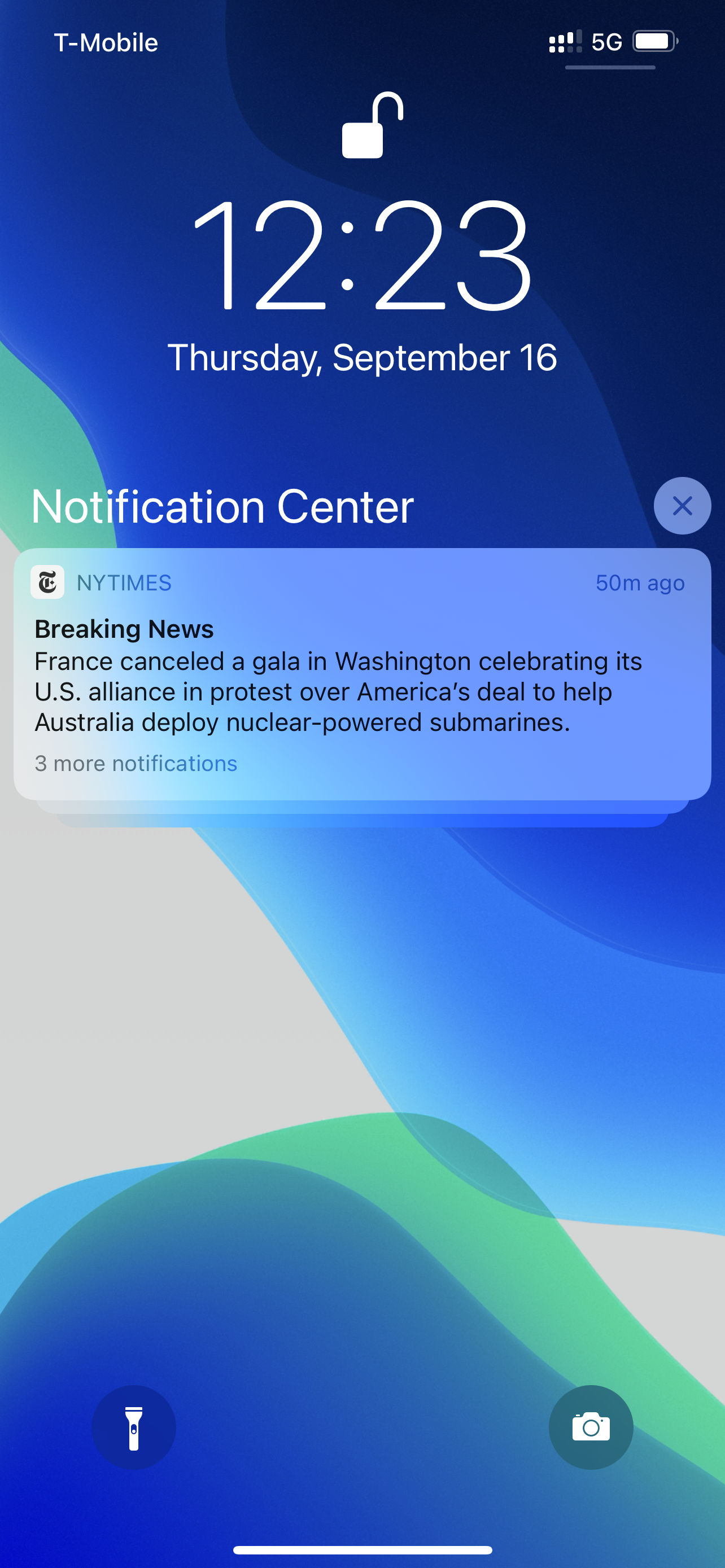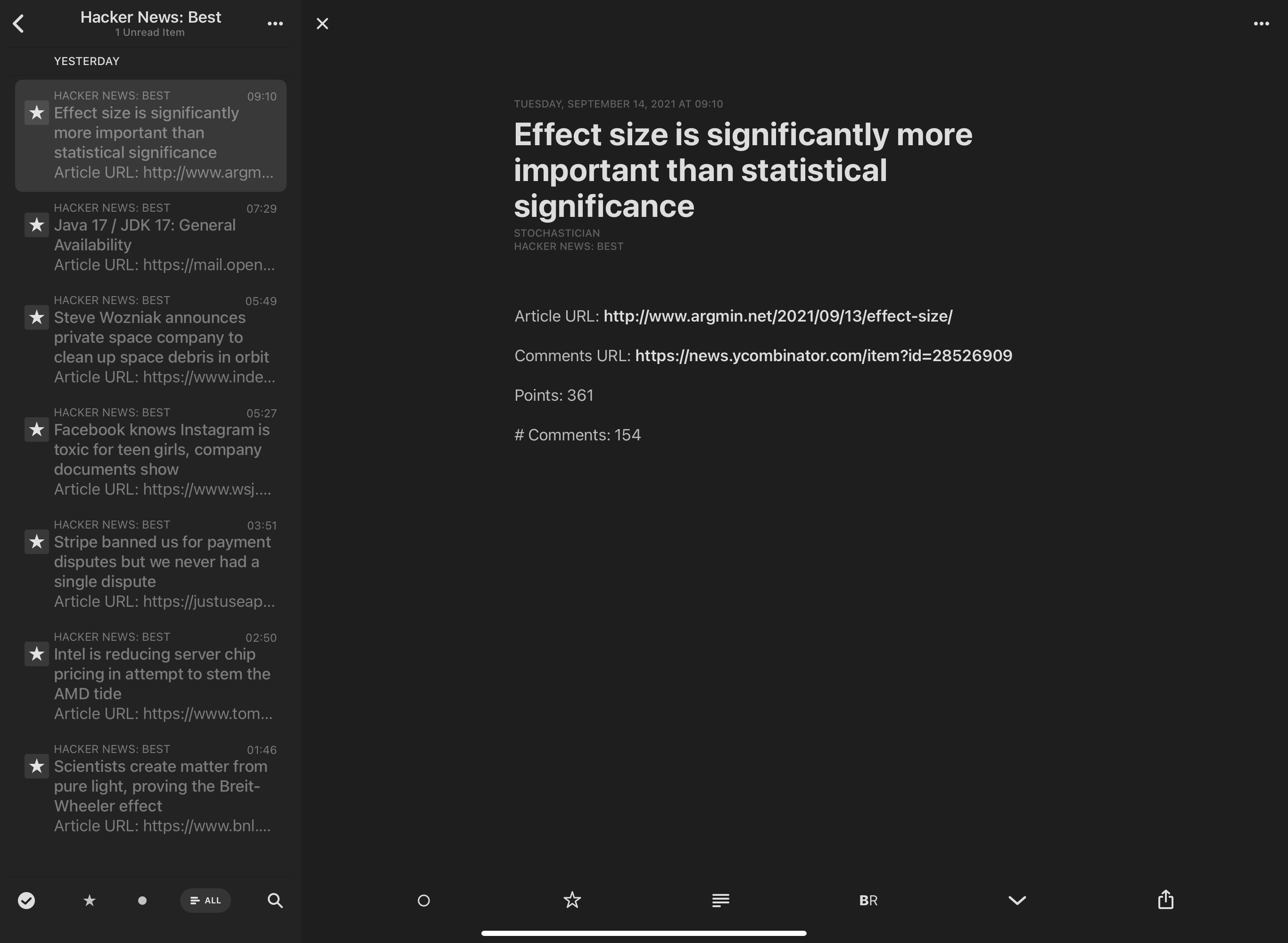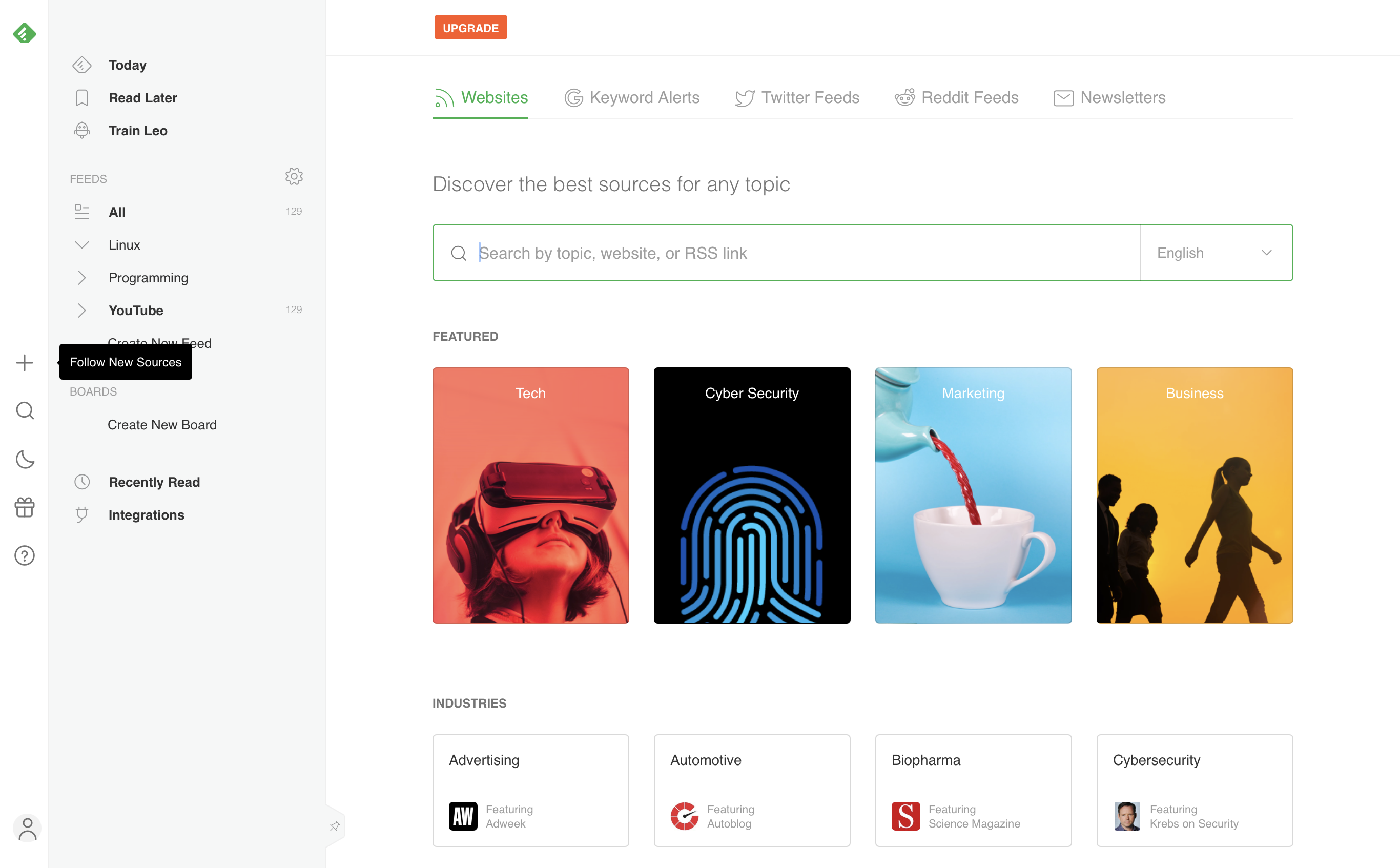I Want My Digital Newspaper Back
Every once in a while, I review my bookmarks for HN articles I read, and one that I remembered seeing a while ago and really liking was essentially a blog post about someone using a eInk display as a New York Times newspaper frame. It wasn’t anything particularly useful, mind you (reading a newspaper off of a “painting” is not an optimal way to consume content), but just the concept of it was fascinating; a newspaper that you had that you could read any day, controlled by you.
You might very well know I enjoy being a control freak, so this definitely resonated with me, but it did also make me realize I’m not very good at controlling this aspect of my life; news.
I, admittedly, have always had a tough time getting into what you would consider conventional news sources since I am a young Generation Z guy who doesn’t believe in television. However, recently, what with me getting a bit older, I’ve realized it’s more and more important to be up to date with the happenings of the world. Frankly, I found news to be hard to get into, precisely because pretty much everything out there is easily acquired. Too easily acquired. So much so, that I don’t even have to think about it. It just happens to make its way onto my phone.

I hate push notifications
I don’t think there’s something I hate more on phones quite like push notifications; an incessant, never-ending source of information that everyone has had their fair share of. Most devices nowadays definitely have better ways of controlling them (Do Not Disturb, Focus modes and notification settings help), but even so, some applications are less likely to implement per-push notification settings, so even letting some in could allow for random useless push notifications filling my already crowded area (I’m looking at you, Uber Marketing).
Either way, I can just disable notifications for Apple News, but then I will only intentionally check news on sources that I’m biased towards, locking myself into my own echo chamber, and that’s not that great, evidently. Ideally, one would read from news sources with varying forms of bias to avoid locking yourself into an echo chamber of your own construction. Cutting notifications removes discoverability, but too much discoverability and I become susceptible to the bias of recommendation algorithms.
Obviously neither one is good, so I have to find a solution for both. And every time I think of it, only one thing comes to mind.
Kiosks are cool
When I was in high school, somewhat close to one of my common outdoor work areas was a little newspaper kiosk. While during my childhood years I basically spent all of my time buying comic books from there (“Rahan” comics are probably 10-year-old me’s most treasured possession), I slowly transitioned to buying newspapers when I got older. I would look at some of the options, pull whichever interested me, and then pick them up for later.
When you really think about it, absolutely no equivalent of this is commonly found on the Internet. You might argue that apps like Apple News are “kiosks”; after all, they garner a collection of news sources you can tune into at your leisure. The reality, however, is that it’s not the same dynamic; most of the digital “kiosks” are obviously more oriented towards recommendation than curating. Apple News’ Front Page is more or less handpicked articles by the app, laid out with (likely) agendas rather than popularity or variety in bias.
And besides of that, newspaper articles aren’t the only form of media consumption people typically approach that recommendation algorithms plague; YouTube is notorious with pushing recommendation in almost every aspect of the application, and TikTok literally bases their entire application on recommendation algorithms, which admittedly is part of the package, but certainly not a “kiosk” that I can pick information for myself1. On top of all that, I haven’t even gotten to what is probably the worst part of recommendation algorithms.
I don’t recall kiosks being never-ending
Contrary to any physical form of media, most digital applications have adopted my most hated UX anti-pattern: infinite scrolling. Pretty much every application nowadays boasts infinite scrolling in order to boost app engagement, because there never is a sense of finality into whatever it is you’re reading. YouTube Recommendations go on forever, Apple News articles never stop, Reddit posts are never-ending and ever-decreasing in quality, and so on.
One of the more recent common side-effects of this horribly annoying design choice is the newly coined term of “doom-scrolling”. I am probably biased here, but I have not found many individuals who’ve found themselves wanting even more news articles to read about how bad things are going; if anything, I’ve only found multiple examples all over Reddit and Twitter of people wishing they didn’t spend so much time getting absorbed by infinite scrolls.
Infinite scrolls are simply not feasible in real life; after all, there isn’t an infinite supply of paper, and no one would legitimately be willing to buy a newspaper that was more than 1000 pages long, which is practically what infinite scrolling does.
Fundamentally, though, all these general “get off my lawn” complaints I have are effectively revolving around one main problem.
Stop throwing magazines in my face
At the end of the day, most of the above anti-patterns are based on the simple fact that most media nowadays is no longer approached whenever we wanted to; rather, media makes its way to us whenever the media provider feels like it. Fundamentally, we’re no longer spending any time “pulling”, but rather everything is “pushed” to our lives, kind of like how spam is thrown straight into your inbox. Effectively, almost all of media consumption has fundamentally approached spam in its “push” model, which removes control on your part almost entirely.
Sadly, there is not much we can do to not add incentives to this model; after all, pushing allows for increasing engagement for that sweet ad revenue. Fundamentally, there is only one thing that I can think of that at least shifts this dynamic.
RSS Feeds!
RSS (Really Simple Syndication) is probably a protocol you’ve at least heard about a bit. Basically, it’s a fancy way of saving XML documents to more easily read content later. RSS feeds (or variations like Atom feeds) typically contain previously delivered sets of articles that you can pull at your leisure and are typically used as summaries of the actual content they link to in order to provide you with the ability to extract links from them later.
Effectively, RSS feeds fit the “pull” model; rather than having push notifications be sent to you without control, you get to decide when to refresh your RSS feeds.
While this protocol has existed for a very long time, it’s definitely received its share of alternatives and updates. It may not be as pervasive as it could be, but it’s found in some useful places. For instance, all YouTube channels continue to have an RSS feed attached to each channel, which you can just paste right into your reader; the New York Times still maintains RSS feeds for various categories, including News of all kinds, which is awesome. Even this blog has an Atom feed that you can subscribe to, and you’ll get updates whenever you want to read from the blog. (provided I write more often for this thing)
Obviously, I can rave about RSS more, but I figure you’d want to see this thing in action, so let’s get ourselves a bit into this.
There’s Probably an App Even for This
There are a significant amount of apps for RSS, most of which are actually surprisingly aesthetic. The most common one I’ve seen is Feedly, which not only offers sync between devices, but also has its own “Explore” section for you to find more intriguing RSS feeds. Inoreader is a nice cross-platform alternative, too, but if you find yourself using Apple devices, Reeder is a very polished iOS application for RSS reading. Coming up is Readwise’s Reader, which seems intriguing, integrating read-later and RSS feeds in one, and it might come with its own recommendation system, so I’ll keep an eye on it.

I probably know what you’re thinking, though; ”But hey, I thought we’re avoiding recommendation algorithms?”, which is a fair question. However, I want to point out something here — recommendation algorithms have their usage and they are a useful technology, but only if they are used intentionally, which is the case here. Leaving ourselves subject to them consuming our time and attention is the issue. In this case, we’re using recommendation algorithms to our advantage to subscribe to proper feeds that we know might be more interesting.

What To Follow
If you’re wondering what RSS feeds to follow, I can’t honestly give you good advice, mostly because you should look for what interests you to follow. Look over what content you typically consume that enriches you and find whenever it has an RSS feed. While news is an obvious RSS feed candidate, you can also subscribe to:
- blogs (like mine 😉)
- link aggregators, like Reddit or Hacker News
- educational YouTube channels
- podcasts! (Fun fact: all podcasts are backed by RSS, even those on Spotify)
- email newsletters! This takes some effort, but it’s very doable thanks to Kill the Newsletter2
There are some things on the Internet that don’t have RSS feeds, but I’ve found that many of these websites do not even require my presence on them at all due to this. Social networks do not have any form of integrated RSS feeds, for instance, and that obviously makes you wonder as to why.3 However, recall that we’re looking to remove the “push” aspect of media consumption, and social networks are the worst culprits of this, so honestly, good riddance in my eyes. At the end of the day, they’re still always available when you need (though a few too close clicks away).
Does this even help?
A good question. I opted to move all of my media checking to RSS feeds, and I’ve found my times spent mindlessly consuming reduced significantly. According to my personal time tracker, I’ve found that my time spent on watching YouTube videos has reduced by 10 hours a week! (yeah, I procrastinate a lot) Asides from that, I’ve found that I spend significantly more time reading news articles than I used to. I’ve also significantly increased the amount of highlights made from Hacker News articles, so rather than passively consuming content, I’ve become more apt to actively consume it.
This pretty works exactly as I intended, since it shifts the intentionality of me checking content in the proper direction.
Still No Newspaper
Even with RSS feeds, I kinda do still miss the days I’d read physical newspapers. Sure, it’s still possible to buy some, but sadly, the world is turning more and more digital, along with recommendation algorithms becoming more and more popular. Even with RSS feeds, I’m still reliant on the content provider to implement one, which might not happen.
Either way, I still miss my newspaper, and I want my digital one back.
At least I have this NYTimes scan, courtesy of the blog post I found.
-
Mind you, TikTok is not the place to get news from, but I am making a point about the pervasiveness of recommendation algorithms. ↩︎
-
It’s even self-hostable, though to be frank, the privacy issues relating to email newsletters are likely not as bad, provided your email newsletter feed is not personalized. That being said, Kill the Newsletter is a bit harder to maintain because of having to handle email deployment, which is annoying. ↩︎
-
Instagram, Facebook and the like do have some ways to create RSS feeds out of them, a-la “Kill the Newsletter”, but they’re really hard to get implemented. And, honestly, is it worth it? ↩︎